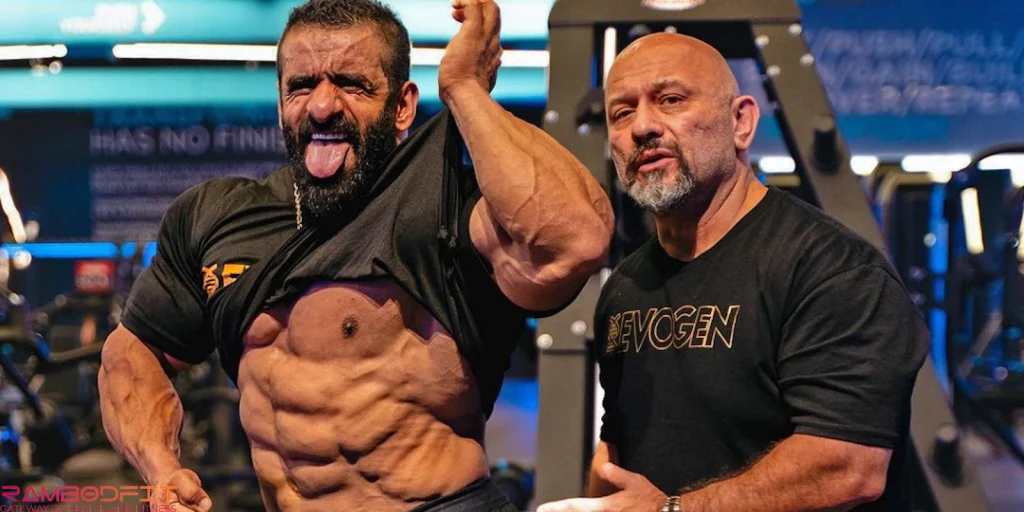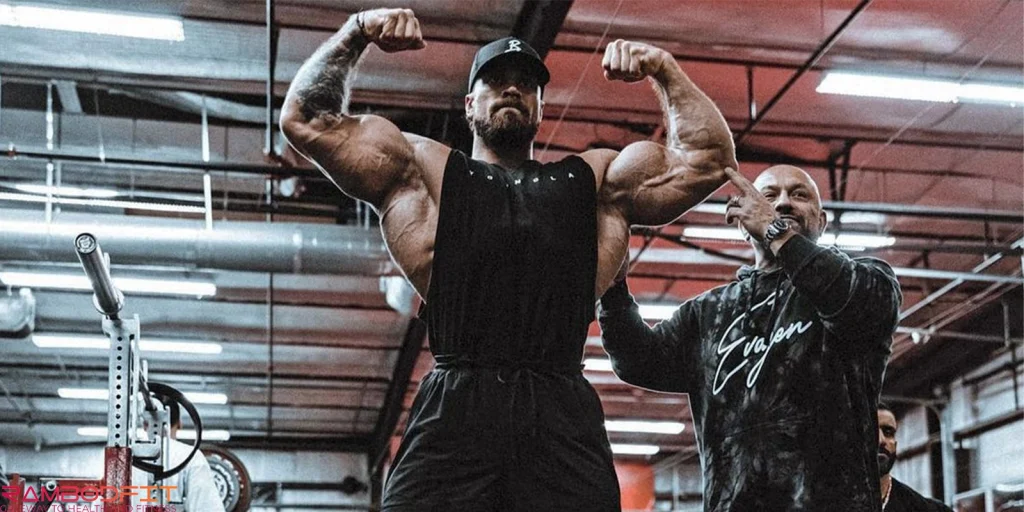


Man, when I first stumbled across FST-7 and muscle growth, I was like, “Okay, here we go—another ‘game-changing’ gym hack.” You know the type: shiny promises, big claims, everyone on Instagram flexing like it’s magic. Supposedly, this thing doesn’t just pump up your muscles, it literally forces the tough casing around them—the fascia—to stretch and make room for more gains. Sounds wild, right?
And yeah, Hany Rambod’s the person behind it. If you’ve followed bodybuilding for more than five seconds, you’ve seen his name plastered everywhere. He’s basically the Yoda for Olympia champs. So when he drops a new method, the hype train leaves the station fast.
But here’s the thing. All the shredded physiques and before-and-after pics aside, there’s this nagging question nobody really wants to answer:
Is FST-7 actually stretching your fascia, or is it just another pump-and-dump routine with a fancy label?
Let’s tear into this on Rambodfit—seven gritty realities about FST-7 and muscle growth, no B.S. We’ll slice through the marketing smoke, peek at the science (what little there is), and throw in some straight-up gym floor experience. Buckle up.
Table of Contents

As an exercise physiologist and a personal trainer, Hany Rambod and I (Rambod Rohani) look the same in many ways, just kidding. He is a role model in the bodybuilding world for almost every coach, and I respect him so much.
However, as an academic character, I always try to find the reasons and logic for every claim, and science is my tool to do so. In the world of research, you can’t claim something for 100 % unless it is proven.
So let’s talk science and analyze this training system in a scientific way. Stay with us.
Alright, time to be real—FST-7 gets results, but not for the reasons the hype machine wants you to believe.
So, here’s the deal: FST-7 (that’s Fascial Stretch Training, by the way) basically means smashing out 7 sets of one isolation move, usually when you’re already toast at the end of your session, barely taking a breath between sets (think, like, 10 to 20 seconds if you’re lucky). The whole pitch is about getting those wild pumps, cranking some serious stretch under load, and shoving a tsunami of blood and nutrients into your muscles.
But calling it “fascial stretch”? Yeah, that’s some clever marketing spin—don’t let the fancy name fool you.
A 2008 study published in the Journal of Applied Physiology revealed a brutal truth: to mechanically stretch fascia in a meaningful, lasting way, it would require a super-physiological force, upward of 900 kilograms of tension (source).
Let’s just rip off the band-aid: no rep range, no fancy pump, no piece of gym equipment—Rambod could engrave his signature on it in gold—none of that’s cranking out the kind of mechanical tension people dream about during a normal workout. Not happening.
So, does FST-7 actually stretch your fascia? Like, literally? Sorry to break your heart, but science says… yeah, not so much.
Look, fascia’s a real pain—stubborn, weirdly adaptive, and honestly, tougher than your grandma’s Sunday brisket. Imagine strapping on an exoskeleton that doesn’t exactly want you to get any bigger. That’s fascia. You can’t just outsmart it with one trick or one fancy program. You need a whole toolbox.
If you want to nudge that stuff, you’re looking at a mix: cranking up volume over months (not just one chest day), sneaking in partial stretches while you’re loaded, letting your muscles fight the weight on the way down, getting some brutal soft tissue work, and mixing things up so your body doesn’t snooze its way through your routine.
Sure, FST-7 can be part of the mix. But on its own? That’s like trying to fill a swimming pool using a single shot glass. You want to really “open up” that muscle? Stop hunting for magic bullets. It’s a system thing, not a one-set wonder.
So, why do some folks absolutely swear by FST-7? Honestly? Because it hurts in that weirdly addictive way—like, pain and pleasure rolled into one. Plus, the pump is just bonkers. Seven sets back-to-back? You’ll feel like your skin’s about to split.
Here’s what’s going down:
– Your muscles are drowning in hydrogen ions.
– Lactate’s pouring in like it’s got nowhere else to be.
– The cells start swelling up (yep, you look jacked).
– Some fancy pathways—think mTOR, MAPK—kick into gear.
End result? You look in the mirror, and, boom, you’re suddenly twice as swole. Feels awesome, right? But let’s not kid ourselves. What’s happening isn’t some magic fascia-stretching voodoo. It’s just a whole lotta metabolites piling up. That pump is like the world’s best placebo. Makes you feel like a Greek god, keeps you coming back for more.
Then the pump dies down… and, uh, your fascia? Probably looks exactly the same as before. Sorry, not sorry.
Alright, here’s the thing—FST-7 does the trick for a ton of lifters. Just… not for the flashy reasons the ads shove at you.
Honestly, as far as muscle-building hacks go, FST-7’s kinda slick:
– You pile on metabolic stress right after hammering the muscles with heavy work.
– It gets your muscles swole as hell (yeah, that pumped-up, tight feeling? That’s a real growth signal, not just a bro myth).
– Barely any rest means you’re grinding through more fatigue, dragging extra muscle fibers into the party.
– You crank up your training volume without needing to throw around heavier weights and trash your joints.
So, if you’re already experienced and looking for a killer finisher—especially if you’re into bodybuilding or just want to look jacked—FST-7 is money.
But come on, calling this thing a “fascia-stretching” miracle? That’s like saying a bicycle pump is gonna smash concrete. Give me a break.
Alright, let’s get into Hany Rambod—the dude’s basically the Tony Soprano of FST-7, right? His client list reads like the Avengers of bodybuilding: Phil Heath, Jeremy Buendia, Hadi Choopan… You can’t argue with results like that. The man’s got some serious pedigree.
But, honestly, half his genius is in the way he sells the whole package. You look for hardcore scientific papers on FST-7? Good luck. They’re not exactly flooding PubMed. What you get instead is a pile of gym stories and the kind of hype that sticks around because legends keep passing it down.
Rambod pitched FST-7 like it was some secret sauce for blowing up your muscles, and people ate it up. It’s got that same vibe as German Volume Training or BFR—sounds mysterious, gets people curious, and, hey, folks keep seeing results (or at least think they do). Forget cold, clinical accuracy; it’s more about the myth and the “bro, trust me” energy.
Is it pure nonsense? Nah. It’s not total snake oil. Let’s call it “semi-science” with a nice glossy marketing finish and a sprinkle of gym folklore.

Go ahead, corner any seasoned bodybuilder and toss that question at them—what’s the real difference between rookies and the big dogs? Nine times outta ten, they’ll hit you with something like, “Man, I’m not just tossing weights around. I’m actually making my muscles work.” That’s the whole mind-muscle thing in action. FST-7 basically shoves you right into that zone, no escape. Try cranking out seven rounds of preacher curls, barely catching your breath in those measly 20-second breaks. Your arms end up shaking so much, you can literally feel every muscle fiber throwing a tantrum.
Stick with this torture long enough, and your brain’s connection to your muscles goes next-level. It’s like flipping a switch for better control, better pumps—basically, it pays off big in the long run. Fascia? Meh, not really the main event here.
So, is it all about stretching fascia? Nope. But does it flip the switch on your muscle awareness? Hell yeah.
Alright, lemme spill about this dude from my old gym—let’s just call him Amir for the story’s sake. This guy? Stuck on shoulder gains. I mean, nothing budged for a whole year. He tried all the classics: bumping the weights up, throwing in supersets, you name it. Total dead end.
One day, he’s just over it. So, what’s he do? Hits 7 savage sets of lateral raises, barely catching his breath—like, 15 seconds tops between each one. He walks out looking like his shoulders just got set on fire.
Here’s the wild part: he starts making this a Monday thing, religiously. Fast-forward 6 weeks—dude’s delts are popping, and you can see he’s walking taller. Confidence level, upgraded.
Was it some fascia voodoo? Nah. Did he magically unlock progressive overload? Not really.
What flipped the switch was the intensity, the crazy short rests, just pushing his body somewhere new. That’s the real deal with FST-7—it’s not some miracle shortcut, but man, it will absolutely catch your muscles off guard and force them to adapt. Not a cure-all, but a spicy trick for the toolbox.

FST-7 isn’t some made-up gym myth—it’s just gotten a bit overhyped and twisted. Look, it’s not turning your fascia into silly putty, no matter what Hany Rambod says. What does it do? It just jacks up the volume and intensity, floods your muscles with that insane burn, and makes you question your life choices every seventh set.
Here’s the thing: people keep hunting for that one magic trick, but honestly? There’s no golden ticket. You gotta mix things up, rotate your routines, and remember, fascia is only one tiny piece of the whole muscle-building circus. You’re not gonna hack your biology with a single magic move.
Train with your head, not just your ego. Use FST-7 to kick your butt into high gear, not because it’s some miracle protocol. The real “secret sauce”? It’s not counting out sets like some sort of gym accountant—it’s showing up and pushing hard with actual purpose. That’s what gets results, not just following some trendy set scheme.
Further Studies & Sources
Nah, not really. Sure, it sorta shines once you’ve hit that annoying plateau and need to slap your muscles awake, but beginners aren’t banned from the party. The thing is, if you’re just starting, you’ll probably get way more out of nailing your form and hammering those big compound lifts. Chasing a pump is fun, but it’s not magic. FST-7 is like hot sauce—awesome when you need an extra kick, but you don’t throw it on everything.
Short answer—don’t. Seriously, blasting yourself with seven sets of deadlifts? That’s a one-way ticket to Snap City. FST-7s are meant for stuff like cable flyes, preacher curls, lateral raises…basically, the moves that let you torch a muscle without risking a trip to the ER. Leave the squat marathons to the masochists.
Eh, kinda, but don’t let the hype fool you. Fascia isn’t Play-Doh—you can’t just mold it overnight. Stuff like heavy negatives, loaded stretches, massage guns, and just plain old consistency might nudge it a bit, but there’s zero proof you’re turning into Stretch Armstrong here. Bottom line: take your time, stay patient, and don’t expect miracle changes just because you’re hammering a new angle.